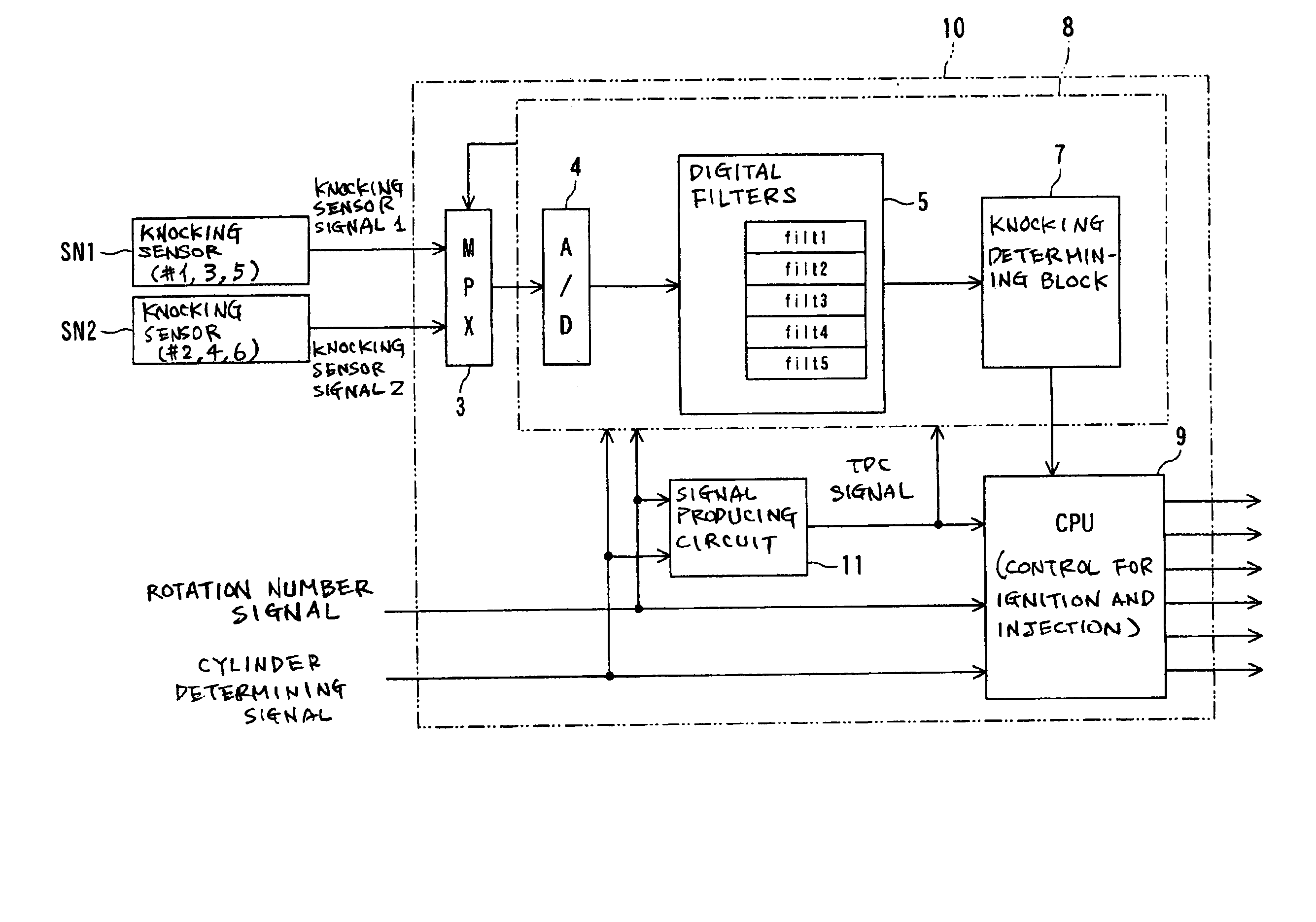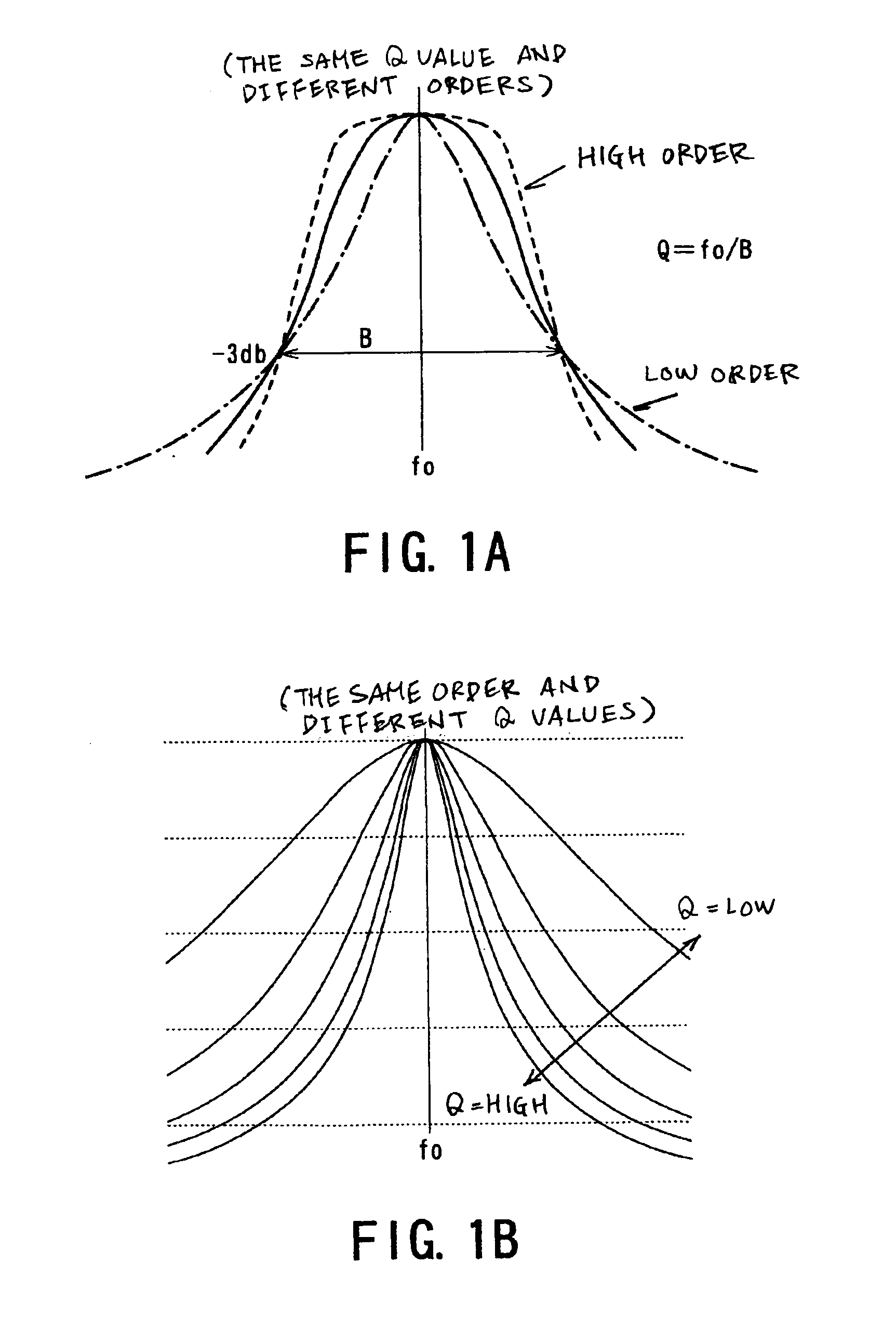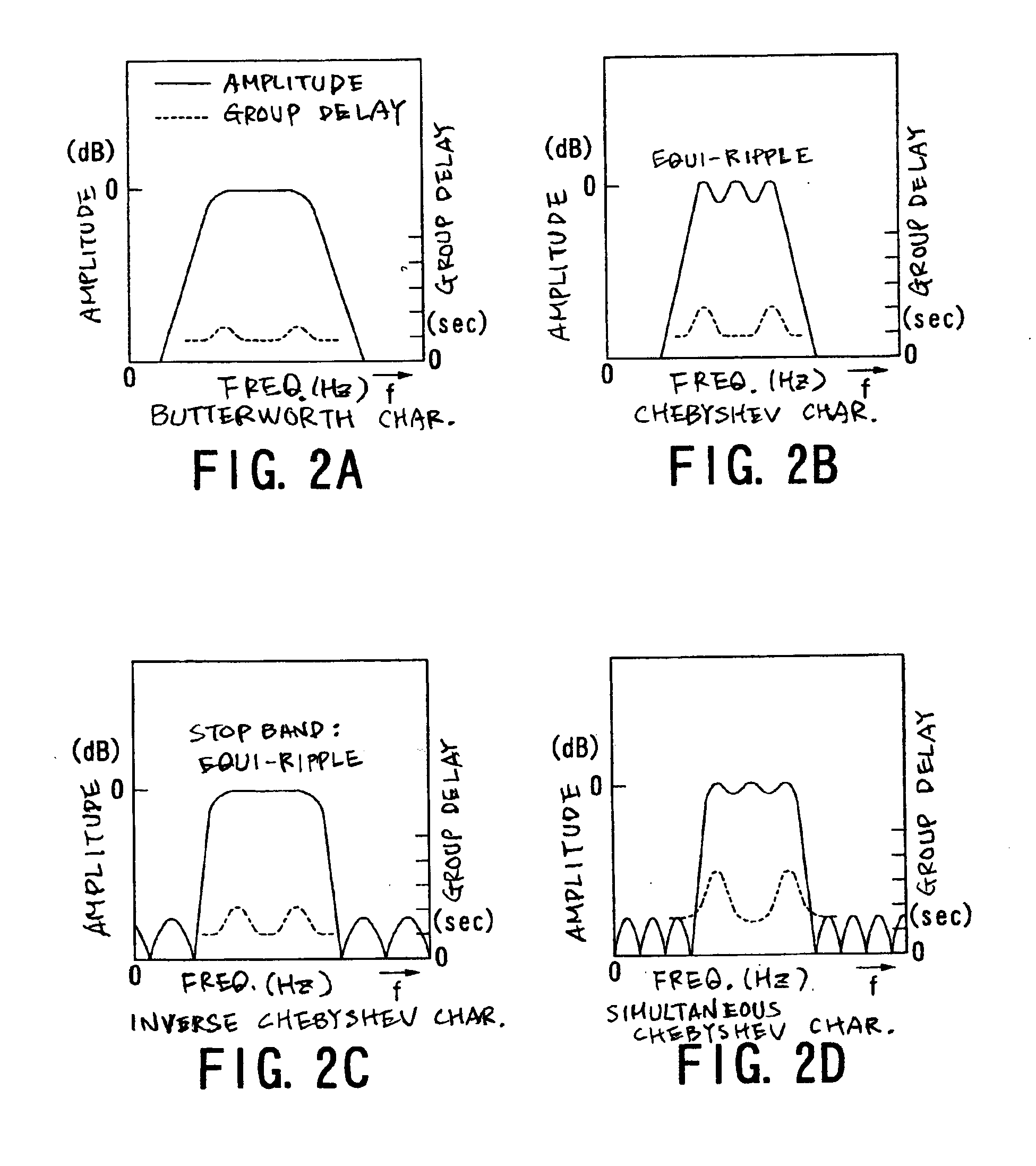Apparatus for detecting knocking of internal combustion
a technology for internal combustion and apparatus, applied in the direction of electric control, machines/engines, instruments, etc., can solve the problems of deteriorating an s/n ratio, unable to detect the knocking with precision, and cannot be expected to have the knocking detected with precision
- Summary
- Abstract
- Description
- Claims
- Application Information
AI Technical Summary
Benefits of technology
Problems solved by technology
Method used
Image
Examples
first embodiment
[0043]Referring to FIGS. 1 to 10, a first embodiment of the present invention will now be described. In this embodiment, an engine control apparatus 10 for a gasoline engine with 6 cylinders (i.e., an internal combustion) is exemplified, in which the knocking detection apparatus according to the present invention is reduced into practice.
[0044]As shown in FIG. 3, the engine control apparatus 10 according to the first embodiment is configured to receive two knocking sensors SN1 and SN2. One knocking sensor SN1 is attached to the engine to detect knocking conditions of three cylinders among all the six cylinders. In this embodiment, such cylinders assigned to the knocking sensor SN1 are the first, third and fifth cylinders #1, #3 and #5. This sensor SN1 outputs an analog-quantity signal indicative of knocking states of those cylinders (hereinafter, referred to as a knocking signal 1). On the other hand, the other knocking sensor SN2 is also attached to the engine to detect knocking co...
first modification
[0094]A first modification relates to the sharper inclinations given to the filters filt4 and filt5. By way of example, to make the filters filt4 and filt5 steeper in the inclinations of the filtering characteristics at their cut-off frequencies than the remaining filters filt1 to filt3, filtering factors (amounts “a” and “b” in FIG. 5) may be adjusted to raise the Q values of the filters filt4 and filt5 over that of the filters filt3 and filt4, with the orders of the filters filt1 to filt5 maintained at the same value (for example, the fourth-order).
[0095]There can be provided a practical example in which the filters filt4 and filt5 are set to have a Q value of 25 dB, while the filters filt1 to filt3 are set to have a Q value of 10 dB or 6 dB. This construction is based on the fact that, as shown in FIG. 1B, the higher the Q value, the sharper the filtering characteristic at the cut-off frequency, provided that the filter orders are the same. It is not necessarily limited, however,...
second modification
[0097]A second modification concerns with types of filters that can be applied to the present invention.
[0098]FIR filters can be used as the filters filt1 to filt5, instead of the IIR filters, in the foregoing first embodiment and the foregoing first modification. The configuration of a typical FIR (finite impulse response) filter is exemplified in FIG. 10, though it is well known.
PUM
| Property | Measurement | Unit |
|---|---|---|
| center frequencies | aaaaa | aaaaa |
| center frequencies | aaaaa | aaaaa |
| center frequencies | aaaaa | aaaaa |
Abstract
Description
Claims
Application Information
 Login to View More
Login to View More - R&D
- Intellectual Property
- Life Sciences
- Materials
- Tech Scout
- Unparalleled Data Quality
- Higher Quality Content
- 60% Fewer Hallucinations
Browse by: Latest US Patents, China's latest patents, Technical Efficacy Thesaurus, Application Domain, Technology Topic, Popular Technical Reports.
© 2025 PatSnap. All rights reserved.Legal|Privacy policy|Modern Slavery Act Transparency Statement|Sitemap|About US| Contact US: help@patsnap.com



